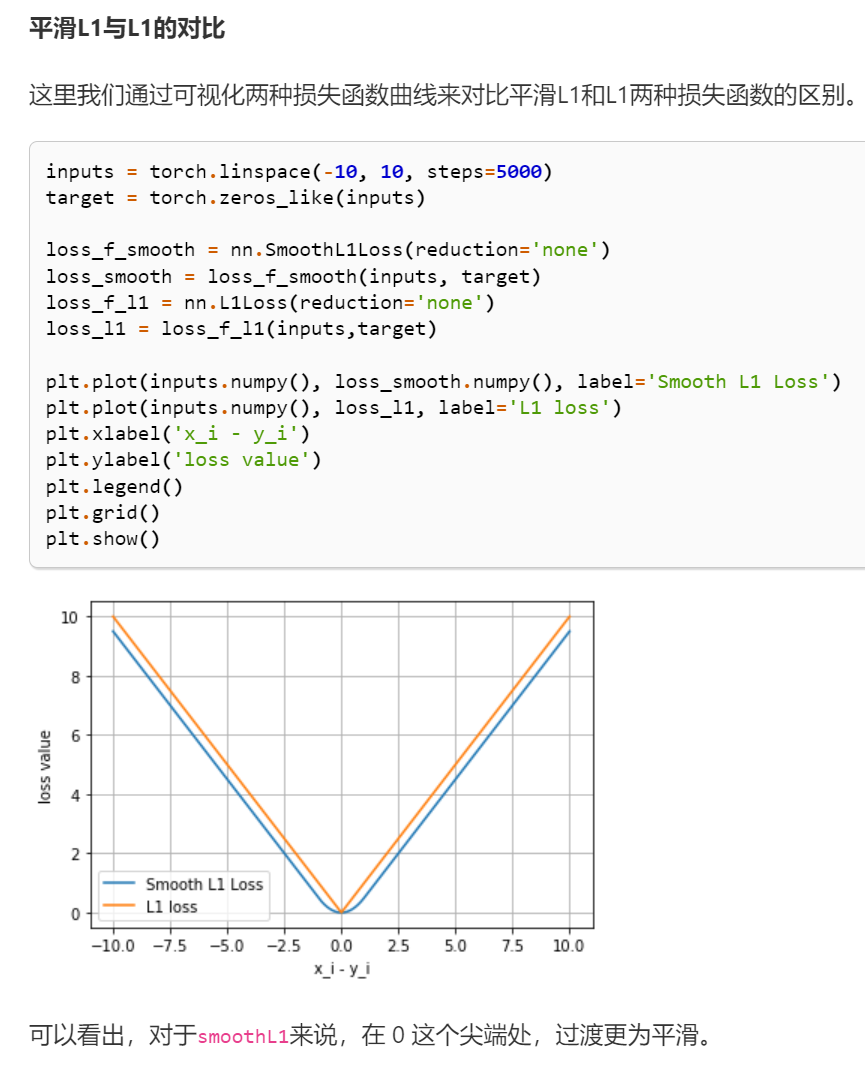系列文章目录
文章目录
pytorch学习笔记(二)pytorch主要组成模块
本文是在学习DataWhale开源教程《深入浅出PyTorch》过程中做的简单摘抄,原文请点这里第三章:PyTorch的主要组成模块 — 深入浅出PyTorch (datawhalechina.github.io)
2.1 基础配置
一些必须的包
import os
import numpy as np
import torch
import torch.nn as nn
from torch.utils.data import Dataset, DataLoader
import torch.optim as optimizer
一些全局参数
- batch_size
- 初始学习率
- 训练次数(max_epochs)
- GPU配置
batch_size = 16
# 批次的大小
lr = 1e-4
# 优化器的学习率
max_epochs = 100
GPU设置
# 方案一:使用os.environ,这种情况如果使用GPU不需要设置
os.environ['CUDA_VISIBLE_DEVICES'] = '0,1'
# 方案二:使用“device”,后续对要使用GPU的变量用.to(device)即可
device = torch.device("cuda:1" if torch.cuda.is_available() else "cpu")
2.2 数据读入
2.2.1 构建Dataset类
第一种数据集:图片已经分类存储在不同的子目录
以CIFAR-10数据集为例
构建Dataset类的方式为
import torch
from torchvision import datasets
train_data = datasets.ImageFolder(train_path, transform=data_transform)
val_data = datasets.ImageFolder(val_path, transform=data_transform)
ImageFolder类用于读取按一定结构存储的图片数据(path对应图片存放的目录,目录下包含若干子目录,每个子目录对应属于同一个类的图片)。
data_transform可以对图像进行一定的变换,如翻转、裁剪等操作,可自己定义。
第二种数据集:图片放在一起,另外有一个文件给出了每个图片对应的标签
这种情况需要自己定义Dataset类
class MyDataset(Dataset):
def __init__(self, data_dir, info_csv, image_list, transform=None):
"""
Args:
data_dir: path to image directory.
info_csv: path to the csv file containing image indexes
with corresponding labels.
image_list: path to the txt file contains image names to training/validation set
transform: optional transform to be applied on a sample.
"""
label_info = pd.read_csv(info_csv)
image_file = open(image_list).readlines()
self.data_dir = data_dir
self.image_file = image_file
self.label_info = label_info
self.transform = transform
def __getitem__(self, index):
"""
Args:
index: the index of item
Returns:
image and its labels
"""
image_name = self.image_file[index].strip('\n')
raw_label = self.label_info.loc[self.label_info['Image_index'] == image_name]
label = raw_label.iloc[:,0]
image_name = os.path.join(self.data_dir, image_name)
image = Image.open(image_name).convert('RGB')
if self.transform is not None:
image = self.transform(image)
return image, label
def __len__(self):
return len(self.image_file)
2.2.2 读入数据(DataLoader)
from torch.utils.data import DataLoader
train_loader = torch.utils.data.DataLoader(train_data, batch_size=batch_size, num_workers=4, shuffle=True, drop_last=True)
val_loader = torch.utils.data.DataLoader(val_data, batch_size=batch_size, num_workers=4, shuffle=False)
其中:
- batch_size:每次读入的样本数
- num_workers:有多少个进程用于读取数据
- shuffle:是否将读入的数据打乱
- drop_last:对于样本最后一部分没有达到批次数的样本,使其不再参与训练
DataLoader的读取可以使用next和iter来完成
import matplotlib.pyplot as plt
images, labels = next(iter(val_loader))
print(images.shape)
plt.imshow(images[0].transpose(1,2,0))
plt.show()
2.3 模型构建
2.3.1 神经网络的构造
Module 类是 nn 模块里提供的一个模型构造类,是所有神经网络模块的基类,我们可以继承它来定义我们想要的模型。下面继承 Module 类构造多层感知机。这里定义的 MLP 类重载了 Module 类的 init 函数和 forward 函数。它们分别用于创建模型参数和定义前向计算。
import torch
from torch import nn
class MLP(nn.Module):
# 声明带有模型参数的层,这里声明了两个全连接层
def __init__(self, **kwargs):
# 调用MLP父类Block的构造函数来进行必要的初始化。这样在构造实例时还可以指定其他函数
super(MLP, self).__init__(**kwargs)
self.hidden = nn.Linear(784, 256)
self.act = nn.ReLU()
self.output = nn.Linear(256,10)
# 定义模型的前向计算,即如何根据输入x计算返回所需要的模型输出
def forward(self, x):
o = self.act(self.hidden(x))
return self.output(o)
MLP类中无需定义反向传播函数,系统将通过自动求梯度而自动生成反向传播所需的backword函数
应用时,我们可以实例化MLP得到一个模型变量net,再向net传入输入数据X做前向计算,net(X)会调用MLP继承自 Module 类的 call 函数,这个函数将调用 MLP 类定义的forward 函数来完成前向计算。
X = torch.rand(2,784)
net = MLP()
print(net)
net(X)
MLP(
(hidden): Linear(in_features=784, out_features=256, bias=True)
(act): ReLU()
(output): Linear(in_features=256, out_features=10, bias=True)
)
tensor([[ 0.0149, -0.2641, -0.0040, 0.0945, -0.1277, -0.0092, 0.0343, 0.0627,
-0.1742, 0.1866],
[ 0.0738, -0.1409, 0.0790, 0.0597, -0.1572, 0.0479, -0.0519, 0.0211,
-0.1435, 0.1958]], grad_fn=<AddmmBackward>)
2.3.2 神经网络中常见的层
这里我们会介绍如何使用 Module 来自定义层
- 不含模型参数的层
import torch
from torch import nn
class MyLayer(nn.Module):
def __init__(self, **kwargs):
super(MyLayer, self).__init__(**kwargs)
def forward(self, x):
return x - x.mean()
layer = MyLayer()
layer(torch.tensor([1, 2, 3, 4, 5], dtype=torch.float))
tensor([-2., -1., 0., 1., 2.])
- 含模型参数的层
Parameter 类是 Tensor 的子类,如果一 个 Tensor 是 Parameter ,那么它会自动被添加到模型的参数列表里。所以在自定义含模型参数的层时,我们应该将参数定义成 Parameter ,除了直接定义成 Parameter 类外,还可以使⽤ ParameterList 和 ParameterDict 分别定义参数的列表和字典。
# 列表形式
class MyListDense(nn.Module):
def __init__(self):
super(MyListDense, self).__init__()
self.params = nn.ParameterList([nn.Parameter(torch.randn(4, 4)) for i in range(3)])
self.params.append(nn.Parameter(torch.randn(4, 1)))
def forward(self, x):
for i in range(len(self.params)):
x = torch.mm(x, self.params[i])
return x
net = MyListDense()
print(net)
# 字典形式
class MyDictDense(nn.Module):
def __init__(self):
super(MyDictDense, self).__init__()
self.params = nn.ParameterDict({
'linear1': nn.Parameter(torch.randn(4, 4)),
'linear2': nn.Parameter(torch.randn(4, 1))
})
self.params.update({'linear3': nn.Parameter(torch.randn(4, 2))}) # 新增
def forward(self, x, choice='linear1'):
return torch.mm(x, self.params[choice])
net = MyDictDense()
print(net)
下面是一些常见的层,比如卷积层、池化层
- 二维卷积层
import torch
from torch import nn
# 卷积运算(二维互相关)
def corr2d(X, K):
h, w = K.shape # K的高度和宽度
X, K = X.float(), K.float()
Y = torch.zeros((X.shape[0] - h + 1, X.shape[1] - w + 1)) # 卷积后得到的数据的形状,因为是和一个h行w列的卷积核卷积,所以维度丢掉h-1行和w-1列
for i in range(Y.shape[0]):
for j in range(Y.shape[1]):
Y[i, j] = (X[i: i + h, j: j + w] * K).sum() # 卷积
return Y
# 二维卷积层
class Conv2D(nn.Module):
def __init__(self, kernel_size):
super(Conv2D, self).__init__()
self.weight = nn.Parameter(torch.randn(kernel_size)) # 一个一行kernel_size列的卷积核
self.bias = nn.Parameter(torch.randn(1)) # 偏置
def forward(self, x):
return corr2d(x, self.weight) + self.bias
- 池化层
池化层每次对输入数据的一个固定形状窗口(⼜称池化窗口)中的元素计算输出。不同于卷积层里计算输⼊和核的互相关性,池化层直接计算池化窗口内元素的最大值或者平均值。该运算也 分别叫做最大池化或平均池化。在二维最⼤池化中,池化窗口从输入数组的最左上方开始,按从左往右、从上往下的顺序,依次在输⼊数组上滑动。当池化窗口滑动到某⼀位置时,窗口中的输入子数组的最大值即输出数组中相应位置的元素。
import torch
from torch import nn
def pool2d(X, pool_size, mode='max'):
p_h, p_w = pool_size
Y = torch.zeros((X.shape[0] - p_h + 1, X.shape[1] - p_w + 1))
for i in range(Y.shape[0]):
for j in range(Y.shape[1]):
if mode == 'max':
Y[i, j] = X[i: i + p_h, j: j + p_w].max()
elif mode == 'avg':
Y[i, j] = X[i: i + p_h, j: j + p_w].mean()
return Y
X = torch.tensor([[0, 1, 2], [3, 4, 5], [6, 7, 8]], dtype=torch.float)
pool2d(X, (2, 2))
tensor([[4., 5.],
[7., 8.]])
pool2d(X, (2, 2), 'avg')
tensor([[2., 3.],
[5., 6.]])
2.3.3 模型示例
两个简单的网络 LeNet 和 AlexNet,链接挂下面感兴趣的可以自己去看看
[3.4 模型构建 — 深入浅出PyTorch (datawhalechina.github.io)](https://datawhalechina.github.io/thorough-pytorch/第三章/3.4 模型构建.html)
2.4 模型初始化
在深度学习模型的训练中,权重的初始值极为重要。一个好的权重值,会使模型收敛速度提高,使模型准确率更精确。为了利于训练和减少收敛时间,我们需要对模型进行合理的初始化。PyTorch也在
torch.nn.init中为我们提供了常用的初始化方法。
官方文档(torch.nn.init — PyTorch 1.12 documentation)
官方文档给出了模型初始化的所有方法,包括每个参数的含义,这里就不再整理了
2.5 损失函数
这里只简单整理一下经典的损失函数,具体的参数含义和数学公式查看这里[3.6 损失函数 — 深入浅出PyTorch (datawhalechina.github.io)](https://datawhalechina.github.io/thorough-pytorch/第三章/3.6 损失函数.html)
2.5.1 二分类交叉熵损失函数
torch.nn.BCELoss(weight=None, size_average=None, reduce=None, reduction='mean')
功能:计算二分类任务时的交叉熵(Cross Entropy)函数。在二分类中,label是{0,1}。对于进入交叉熵函数的input为概率分布的形式。一般来说,input为sigmoid激活层的输出,或者softmax的输出。
2.5.2 交叉熵损失函数
torch.nn.CrossEntropyLoss(weight=None, size_average=None, ignore_index=-100, reduce=None, reduction='mean')
功能:计算交叉熵函数
2.5.3 L1损失函数
torch.nn.L1Loss(size_average=None, reduce=None, reduction='mean')
功能: 计算输出y和真实标签target之间的差值的绝对值。
2.5.4 MSE损失函数
torch.nn.MSELoss(size_average=None, reduce=None, reduction='mean')
功能: 计算输出y和真实标签target之差的平方。
2.5.5 平滑L1 (Smooth L1)损失函数
torch.nn.SmoothL1Loss(size_average=None, reduce=None, reduction='mean', beta=1.0)
功能: L1的平滑输出,其功能是减轻离群点带来的影响

2.5.6 目标泊松分布的负对数似然损失
torch.nn.PoissonNLLLoss(log_input=True, full=False, size_average=None, eps=1e-08, reduce=None, reduction='mean')
功能: 泊松分布的负对数似然损失函数
2.5.7 KL散度
torch.nn.KLDivLoss(size_average=None, reduce=None, reduction='mean', log_target=False)
功能: 计算KL散度,也就是计算相对熵。用于连续分布的距离度量,并且对离散采用的连续输出空间分布进行回归通常很有用。
2.5.8 MarginRankingLoss
torch.nn.MarginRankingLoss(margin=0.0, size_average=None, reduce=None, reduction='mean')
功能: 计算两个向量之间的相似度,用于排序任务。该方法用于计算两组数据之间的差异。
2.5.9 多标签边界损失函数
torch.nn.MultiLabelMarginLoss(size_average=None, reduce=None, reduction='mean')
功能: 对于多标签分类问题计算损失函数。
2.5.10 二分类损失函数
torch.nn.SoftMarginLoss(size_average=None, reduce=None, reduction='mean')torch.nn.(size_average=None, reduce=None, reduction='mean')
功能: 计算二分类的 logistic 损失。
2.5.11 多分类的折页损失
torch.nn.MultiMarginLoss(p=1, margin=1.0, weight=None, size_average=None, reduce=None, reduction='mean')
功能: 计算多分类的折页损失
2.5.12 三元组损失
torch.nn.TripletMarginLoss(margin=1.0, p=2.0, eps=1e-06, swap=False, size_average=None, reduce=None, reduction='mean')
功能: 计算三元组损失。
2.5.13 HingEmbeddingLoss
torch.nn.HingeEmbeddingLoss(margin=1.0, size_average=None, reduce=None, reduction='mean')
功能: 对输出的embedding结果做Hing损失计算
2.5.14 余弦相似度
torch.nn.CosineEmbeddingLoss(margin=0.0, size_average=None, reduce=None, reduction='mean')
功能: 对两个向量做余弦相似度
2.5.15 CTC损失函数
torch.nn.CTCLoss(blank=0, reduction='mean', zero_infinity=False)
功能: 用于解决时序类数据的分类
2.6 训练和评估
这个教程里讲得就很精简了,没什么好摘抄的了,我认认真真做完笔记之后发现差不多把整页都抄下来了(。_。)
直接看教程原文吧3.7 训练和评估 — 深入浅出PyTorch (datawhalechina.github.io)
2.7 Pytorch优化器
也直接看原文吧3.9 Pytorch优化器 — 深入浅出PyTorch (datawhalechina.github.io)























 2030
2030











 被折叠的 条评论
为什么被折叠?
被折叠的 条评论
为什么被折叠?










